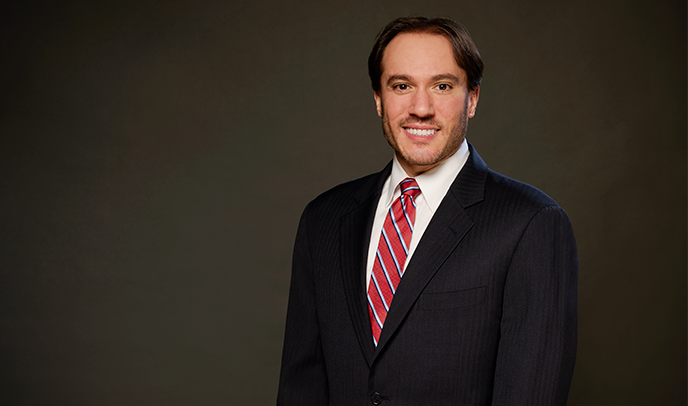Overview
All healthcare providers owe a professional duty to their patients. If a healthcare provider fails in his or her duty, it is called a breach in the standard of care. A breach in the standard of care can lead to catastrophic injuries or death. When that happens, the provider has committed medical malpractice.
The attorneys at Morris James have litigated almost every type of medical malpractice claim. Some common types of malpractice claims include:
Pregnancy care and labor & delivery management
The birth of one’s child is one of the most exciting and wonderful life experiences. Unfortunately, this event can become horrific if the medical providers do not act appropriately to monitor and treat the mother and baby. If the healthcare providers fail to treat the mother or child appropriately during her pregnancy or labor and delivery, this can lead to catastrophic birth injuries to both the mother, father and baby. Often, healthcare providers wait too long to deliver a baby, which can lead to decreased oxygen to the baby’s brain, resulting in devastating injuries (like cerebral palsy). Medical negligence during labor can also lead to other physical injuries, including injuries to the baby’s arms or shoulders (brachial plexus injuries). All birth injuries can have a lifelong impact on the child and family.
Hospital negligence
Patients go to a hospital for all types of care, including emergency room care, surgeries, births, and other issues. While at a hospital, patients can be treated by numerous healthcare providers, including doctors, physician assistants, nurse practitioners, and nurses. When these providers breach the standard of care and harm a patient, regardless of the type of care, the hospital may be responsible for those injuries.
Failure to diagnose a medical condition
If the healthcare provider acted negligently in failing to timely identify, diagnose and treat the medical condition, and if that delay caused harm, the treating healthcare provider might be liable for medical malpractice. In some instances, such as cancer, the failure to timely identify, diagnose, and treat the medical condition can lead to catastrophic injuries.
Failure to follow-up
Sometimes, a patient expects a healthcare provider like a doctor to follow up on a test, visit, or study. This commonly happens after a patient has a lab test, a biopsy, an imaging study like an x-ray or other scan, or has an ongoing medical condition. If the healthcare provider fails to follow-up when he or she is supposed to do so, and if that failure to follow-up leads to a delay in a medical diagnosis, it can cause harm to the patient. In that situation, the failure to follow-up may be a basis for a medical malpractice claim.
Failure to monitor
Oftentimes after a patient has a medical procedure, the patient is admitted to the hospital or another medical facility so that the medical staff, including doctors and nurses, can monitor the patient to ensure that no new problems develop. Sometimes, that monitoring is done at the patient’s home by trained medical staff. If the medical providers caring for the patient do not monitor the patient correctly, they can sometimes miss important medical issues, which can lead to harm. If the medical providers did not monitor the patient correctly, and this failure causes harm, the patient or the patient’s family may have a potential medical malpractice claim.
Surgical errors
Despite the technological advances and techniques that surgeons have at their disposal, there may still be surgical errors. Sometimes, those are expected, but other times they may be due to the surgeon making unreasonable errors. If a surgeon makes an unreasonable error that causes harm, that can be a basis for a medical malpractice claim. Some examples of surgical errors that might be malpractice include puncturing internal organs, injuring blood vessels, operating on the wrong body part, or leaving surgical instruments inside the body.
Prescription errors
Healthcare providers may make mistakes with medications for patients. These errors include a doctor or nurse practitioner writing an incorrect dosage on a prescription, issuing a prescription that should never have been given under the circumstances, administering an incorrect amount of a medication, or medical equipment giving the patient the wrong dose of a medication. When that medical error causes harm, that may be a basis for a medical malpractice claim.
Whether your injury is due to one of these causes, or some other medical professional error, the attorneys at Morris James know how devastating they can be to a patient or family. In addition to the physical and emotional pain and suffering from the healthcare providers’ misconduct, these injuries can result in significant medical bills, prevent someone from working and earning a living, and lead to significant pain and suffering. While no amount of money can make a patient whole after suffering an injury due to a healthcare provider’s negligence, the Morris James medical malpractice team knows how to fight to ensure their clients receive every penny they deserve.
The lawyers of Morris James have been fighting for victims of negligence since we opened our doors in 1932. We deal with lawyers and insurance companies so that you can focus on healing. Our medical malpractice attorneys know the strategies used to defend healthcare providers. We will fiercely advocate for our clients, going to trial when necessary, to obtain the financial compensation you need to regain stability and security after your injury.
If you or a loved one has suffered an injury due to a mistake by a healthcare professional, we may be able to help. Our attorneys at Morris James are available to talk to you about your rights and your options at this difficult time. Contact us online or call 302.888.6857 for a free, no obligation consultation with an attorney.
Team
News
Video/Resources
Publications
- March 19, 2024
- February 21, 2024
- November 14, 2023
- October 12, 2023
- September 27, 2023
- September 13, 2023
- September 8, 2023
- August 1, 2023
Testimonials
- If we have anyone that needs an injury attorney, we will definitely recommend them!
My wife and I had an excellent experience with Morris James LLP. If we have anyone that needs an injury attorney, we will definitely recommend them!
Joseph M







